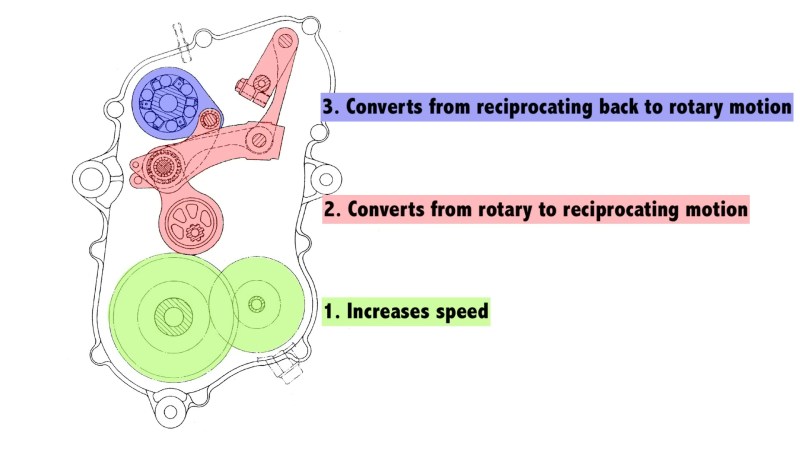
While bicycle gearboxes date back to at least the 1920s, they’re relatively unseen in bike racing. One exception is Honda’s race-winning mid-drive gearboxes, and [Alee Denham] gives us a look at what makes these unique drives tick.
Honda has developed three generations of bicycle gearbox as part of their company’s R&D efforts, but none have ever been released as a commercial product. Designed as a way for their engineers to stretch their mental muscles, the gearboxes were only used in bike races and seen at a few trade shows. In 2004, the third gen “derailleur in a box” led to the first gearbox victory in the Downhill World Cup Circuit.
The third gen gearbox differs significantly from the CVT drivetrains in the first and second generation gearboxes, but it is unclear why Honda abandoned the CVT. [Denham] has a nice animation detailing the inner workings of these CVTs based on information from the original patents for these rarely seen gearboxes.
Derailleurs remain the primary drivetrain in racing due to their lighter weight and higher overall efficiency. While still expensive, the decreased maintenance of gearbox drivetrains make a lot of sense for more mundane cycling tasks like commuting or hauling cargo, but only time will tell if the derailleur can be supplanted on the track and trail.
For more on bicycle drivetrains, check out this chainless digital drivetrain or the pros and cons of e-bike conversions.
0 Commentaires